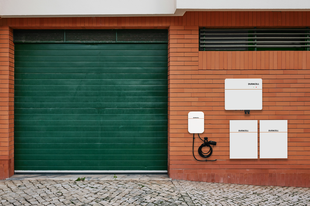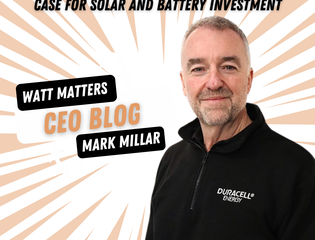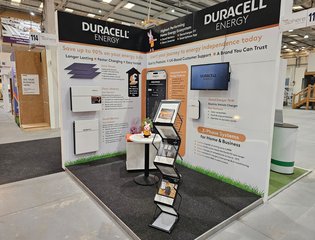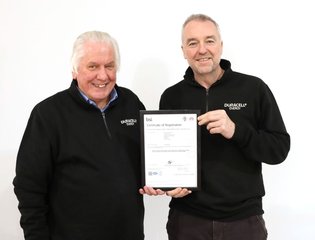What is a Microgrid in a Power System, and How Does it Work?
8 November 2024

A microgrid is a self-sufficient energy system that serves a discrete geographic footprint. So a community or a business can develop a microgrid. A microgrid is local, independent and intelligent.
A microgrid will include power generation such as solar panels or wind turbines, a storage element such as batteries to store the renewable energy generated and an intelligent controller.
A microgrid is normally connected to the main grid but can be disconnected if necessary (islanded) for example during a power outage. Microgrids provide energy to the immediate vicinity and the peaks in demand can be managed and balanced by the intelligent setup of the microgrid.
How Microgrids Work
Microgrids include renewable power generation, distribution and control. Generally, they will use renewable energy sources such as solar or wind. This energy is then saved in a storage system, normally batteries. An intelligent control centre, or controller, then regulates the energy flow balancing out demand to ensure the system remains in balance. As a microgrid is normally connected to the grid, it can be balanced with the grid if necessary, though equally it can be disconnected or islanded from the grid, which can be useful in power outages. You can design your microgrid to be completely off-grid, for example, if you live in a remote area, or you wish to be completely independent.
Benefits of Microgrids
There are many benefits to microgrids, and it is important to understand the advantages that they can bring.
Energy Resilience and Independence
A microgrid can give you excellent energy resilience, as you can generate your own power and then store it and have control over how to distribute it. This can give you an advantage if you need extra power during peak times, as you can manage the extra demand placed upon your microgrid with your intelligent controller. It also gives you better independence which can be extremely invaluable during power outages.
Local Power Control
Microgrids embrace the concept of utilising local resources, by generating power locally and storing it and distributing it locally. By using a microgrid you can reduce the amount of wastage caused by distributing power over many miles. The American website Microgrid Knowledge comments; “Delivering power from afar is inefficient because some of the electricity – as much as 8% to 15% – dissipates in transit.” (Data sourced from Schneider Electric Blog). By distributing power locally you are substantially reducing waste.
Environmental and Economic Advantages
Reducing wastage and generating power through renewable sources will both help to reduce the environmental impact of your power. It is also often more cost-effective to manage your power requirements through a microgrid as you can reduce waste and ensure that the system runs efficiently.
Scalability
Microgrids are very scalable, which means that they can be adjusted and increased as the demands placed upon them grow. This adaptability makes them an excellent investment as they are not restrictive in the future.
Types of Microgrids
Microgrids can be used in a wide array of situations, making them an ideal solution to tackle different energy problems.
Community Microgrids
Microgrids can be used to serve communities, providing power to both crucial services such as hospitals, or simply to domestic properties. This allows a community to manage their own power requirements.
Commercial and Industrial Microgrids
Commercial and industrial outfits can run their own microgrids, which can be extremely beneficial, especially as commercial sites can struggle with placing high demands onto the grid at key times of the day. With your own microgrid, you can plan for the energy requirement at key points in time and ensure that the distribution is set up to cope with these peaks in energy demand.
Remote Microgrids
Remote microgrids are found on islands or in parts of the world that have no main power sources. They are independent and not connected to the grid.
Hybrid Microgrids
Hybrid microgrids use two or more energy sources, for example, solar and wind power, to generate their energy. This energy is then stored in a battery system. A hybrid system can be grid-connected or islanded depending on the requirements.
Challenges in Microgrid Implementation
Naturally, there are challenges in microgrid implementation, however despite these microgrids are still an excellent way to create resilient and stable energy systems. Microgrids can be expensive in the beginning, which can create a financial hurdle, especially for smaller businesses, or community-based projects. Complexities around regulations and design can be tricky especially if there is no expert on hand as part of the project. The technologies used can be complex. While microgrids are scalable, this does depend, in part, on the initial setup. It is important to consider possibilities for expansion in the future, during the planning phase of the project.
Applications of Microgrids
There are many applications of microgrids, including business and community use. Microgrids are used in communities to provide affordable and reliable power to the local area. They can be used for food holding centres which must be kept operational during power outages. Health care centres such as hospitals, must be kept up and running even during power cuts, and they can benefit from running a microgrid. They can be used for a school or a university campus to help meet their sustainability targets. Ports and airports are starting to use them to provide localised and secure energy. Utility companies are seeing the benefits of microgrids and are starting to incorporate them into their systems.
Microgrids in the Future
Microgrids are a rapidly growing market, driven by our growing need to embrace renewable energy. “As of 2022, the International Energy Agency (IEA) estimates that by 2027 the world will have added as much renewable power as it did in the past 20 years — a staggering 85 per cent acceleration from the five previous years.” Microgrids are a crucial part of ensuring that renewable energy is usable, reliable and stable, and consequently, we expect to see microgrids being used more and more frequently.
Embrace Solar Power with a Duracell Energy Home Battery
While a home energy set-up with solar panels and battery storage is not defined as a microgrid, there are similarities in the advantages that it offers. Using home batteries to store energy generated through your solar panels, brings stability to your renewable energy. In a domestic setting, you can be self-reliant when needed, but also pull power from the grid, which you can always buy at a cheaper price, and store in your battery storage system for use at peak times. However you want to use your home battery set-up, make sure your battery is a Duracell Energy battery. Embrace a greener tomorrow, with Duracell Energy home batteries today. Simply use our online quote calculator to help you choose the best solar battery storage set-up for your home.


